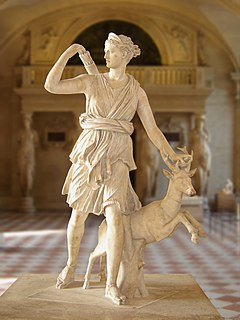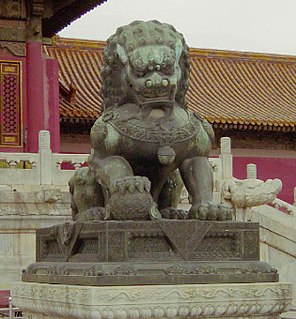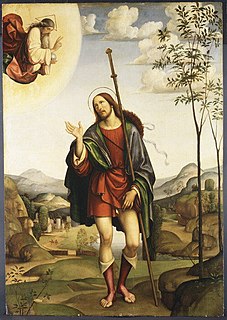 W
WDogs, which are humanity's first and most-common domestic animals, have played a role in many religious traditions.
 W
WAll Dogs Go to Heaven is a 1989 animated musical fantasy adventure comedy-drama film directed by Don Bluth and co-directed by Gary Goldman and Dan Kuenster. It tells the story of Charlie B. Barkin, a German Shepherd that is murdered by his former friend, Carface Carruthers, but withdraws from his place in Heaven to return to Earth, where his best friend, Itchy Itchiford, still lives, in order to take revenge on Carface, but ends up befriending a young orphan girl named Anne-Marie. In the process, Charlie learns an important lesson about kindness, friendship and love.
 W
WAres is the Greek god of courage and war. He is one of the Twelve Olympians, and the son of Zeus and Hera. In Greek literature, he often represents the physical or violent and untamed aspect of war and is the personification of sheer brutality and bloodlust, in contrast to his sister, the armored Athena, whose functions as a goddess of intelligence include military strategy and generalship.
 W
WArtemis is the Greek goddess of the hunt, the wilderness, wild animals, the Moon, and chastity. The goddess Diana is her Roman equivalent.
 W
WA Bark Mitzvah is an observance and celebration of a dog's coming of age, like the Jewish traditional Bar Mitzvah and Bat Mitzvah. The term has been in use since at least as early as 1958 and Bark Mitzvahs are sometimes held as an adjunct to the festival of Purim for fun.
 W
WIn Greek mythology, Cerberus, often referred to as the hound of Hades, is a multi-headed dog that guards the gates of the Underworld to prevent the dead from leaving. He was the offspring of the monsters Echidna and Typhon, and was usually described as having three heads, a serpent for a tail, and snakes protruding from multiple parts of his body. Cerberus is primarily known for his capture by Heracles, one of Heracles' twelve labours.
 W
WChinese or Imperial guardian lions are a traditional Chinese architectural ornament. Typically made of stone, they are also known as stone lions or shishi (石獅、shíshī). They are known in colloquial English as lion dogs or foo dogs/fu dogs. The concept, which originated and became popular in Chinese Buddhism, features a pair of highly stylized lions—often one male with a ball and one female with a cub—which were thought to protect the building from harmful spiritual influences and harmful people that might be a threat. Used in imperial Chinese palaces and tombs, the lions subsequently spread to other parts of Asia including Japan, Korea, Tibet, Thailand, Burma, Vietnam, Sri Lanka, Nepal, Cambodia, Laos, Taiwan, and Malaysia.
 W
WSaint Christopher is venerated by several Christian denominations as a martyr killed in the reign of the 3rd-century Roman emperor Decius or alternatively under the emperor Maximinus Daia. There appears to be confusion due to the similarity in names "Decius" and "Daia". However, his veneration only appears late in Christian tradition, and did not become widespread in the Western Church until the Late Middle Ages, although churches and monasteries were named after him by the 7th century.
 W
WThe church grim is a guardian spirit in English and Scandinavian folklore that oversees the welfare of a particular Christian church and protects the churchyard from those who would profane and commit sacrilege against it. It often appears as a black dog but is known to take the form of other animals.
 W
WThe Dog (狗) is eleventh of the 12-year cycle of animals which appear in the Chinese zodiac related to the Chinese calendar. The Year of the Dog is associated with the Earthly Branch symbol 戌. The character 狗, also refers to the actual animal while 戌, also refers to the zodiac animal.
 W
WA hellhound is a supernatural dog in folklore. A wide variety of ominous or hellish supernatural dogs occur in mythologies around the world. Features that have been attributed to hellhounds include mangled black fur, glowing red eyes, super strength and speed, ghostly or phantom characteristics, and a foul odor. Certain European legends state that if someone stares into a hellhound's eyes three times or more, that person will surely die. In cultures that associate the afterlife with fire, hellhounds may have fire-based abilities and appearance. They are often assigned to guard the entrances to the world of the dead, such as graveyards and burial grounds, or undertake other duties related to the afterlife or the supernatural, such as hunting lost souls or guarding a supernatural treasure. In European legends, seeing a hellhound or hearing it howl may be an omen or even a cause of death. They are said to be the protectors of the supernatural, guarding the secrecy of supernatural creatures, or beings, from the world.
 W
WInugami , like kitsunetsuki, is a spiritual possession by the spirit of a dog, widely known about in western Japan. They have seemed firmly rooted until recent years in the eastern Ōita Prefecture, Shimane Prefecture, and a part of Kōchi Prefecture in northern Shikoku, and it is also theorized that Shikoku, where no foxes (kitsune) could be found, is the main base of the inugami. Furthermore, traces of belief in inugami exists in the Yamaguchi Prefecture, all of Kyushu, even going past the Satsunan Islands all the way to the Okinawa Prefecture. In the Miyazaki Prefecture, the Kuma District, Kumamoto Prefecture, and Yakushima, the local dialect pronounces it "ingami" and in Tanegashima, they are called "irigami." It can also be written in kanji as 狗神.
 W
WAl-Kahf is the 18th chapter (sūrah) of the Quran with 110 verses (āyāt). Regarding the timing and contextual background of the revelation, it is an earlier "Meccan surah", which means it was revealed in Mecca, instead of Medina.
 W
WSaint Roch or Rocco (lived c. 1348 – 15/16 August 1376/79 is a Catholic saint, a confessor whose death is commemorated on 16 August and 9 September in Italy; he is specially invoked against the plague. He may also be called Rock in English, and has the designation of St Rollox in Glasgow, Scotland, said to be a corruption of St Roch's Loch, which referred to a small loch once near a chapel dedicated to St. Roch in 1506.
Sagdid is a ritual which forms an essential part of a Zoroastrian funeral ceremony. The word "Sagdid" means "glance of the dog".
 W
WIn Christian tradition, the Seven Sleepers is the story of a group of youths who hid inside a cave outside the city of Ephesus around 250 AD to escape one of the Roman persecutions of Christians and emerged some 300 years later. A version of the story also appears in the Qur'an (18:9–26). It was also translated into Persian, Kyrgyz and Tatar.
 W
WIn Aztec mythology, Xolotl was a god of fire and lightning. He was commonly depicted as a dog-headed man and was a soul-guide for the dead. He was also god of twins, monsters, misfortune, sickness, and deformities. Xolotl is the canine brother and twin of Quetzalcoatl, the pair being sons of the virgin Coatlicue. He is the dark personification of Venus, the evening star, and was associated with heavenly fire.